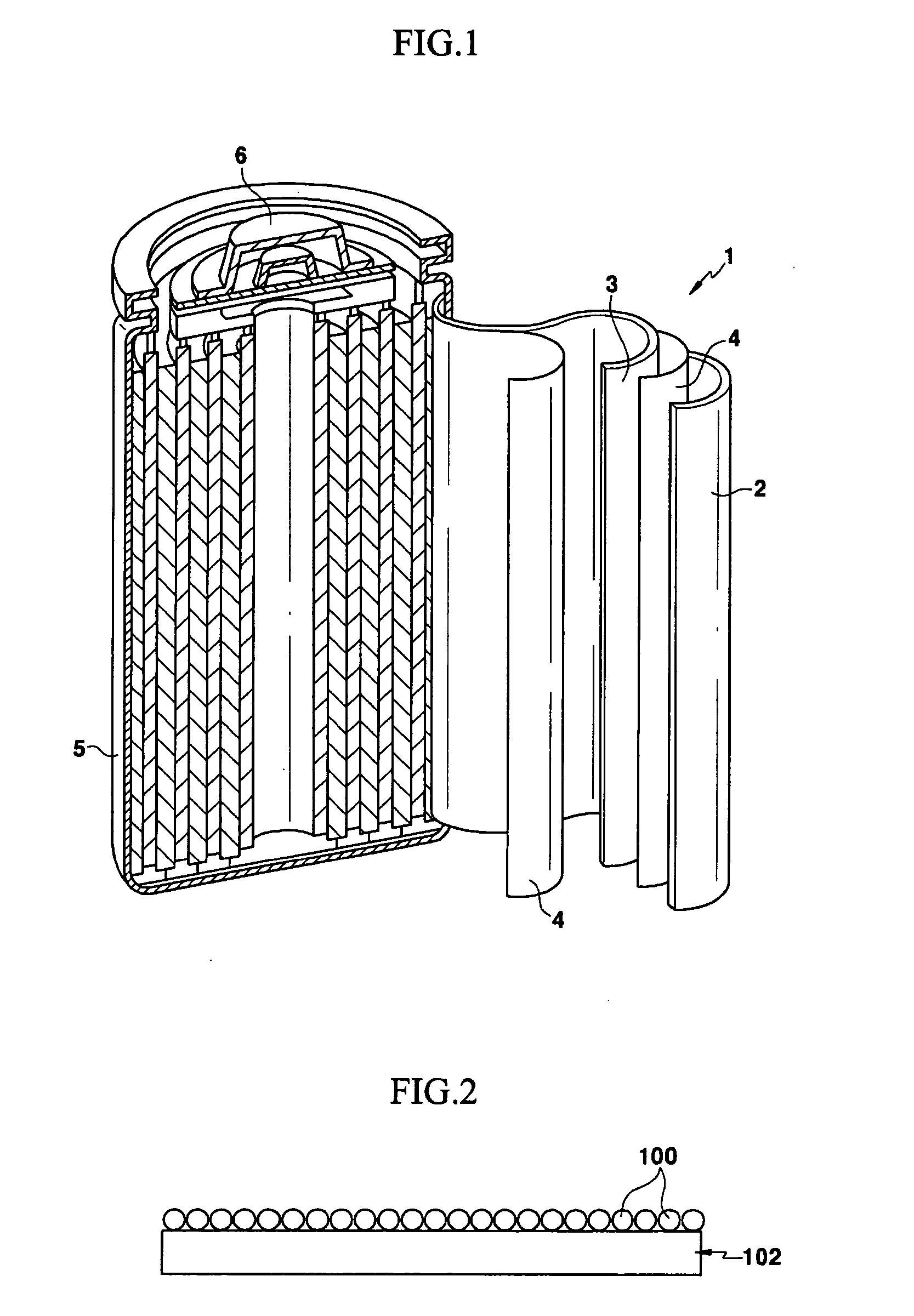Lithium secondary battery
- Summary
- Abstract
- Description
- Claims
- Application Information
AI Technical Summary
Benefits of technology
Problems solved by technology
Method used
Image
Examples
example 1
[0038] 94 wt % of LiCoO2 as a positive active material, 3 wt % of Super P as a conductive agent, and 3 wt % of polyvinylidene fluoride (PVdF) as a binder were mixed in N-methyl-2-pyrrolidone (NMP) to prepare a positive active material slurry. The LiCoO2 positive active material was an active material showing a charge capacity of 160 mAh / g when initially charged at 0.1 C to a voltage of 4.3V and a discharge capacity of 157 mAg / g when discharged to 3.0V.
[0039] The positive active material slurry was coated on an Al-foil current collector and dried to form a positive active material layer on the current collector. On the positive active material layer, a lithium metal composition was coated and dried at 110° C. to fabricate a positive electrode having a lithium metal powder layer 7 μm thick. The lithium metal composition was prepared by adding 10 parts by weight of lithium metal having an average particle size of about 5 μm to 100 parts by weight of tetrahydrofuran solvent. The amount...
example 2
[0042] A lithium secondary battery cell was fabricated by the same method as Example 1, except that the positive active material slurry prepared by the procedure of Example 1 was coated on an Al foil current collector to fabricate a positive electrode, and after the negative active material slurry was coated on a Cu-foil to form a negative active material layer, the lithium metal composition was coated thereon and dried at 110° C. to fabricate a negative electrode.
example 3
[0043] A lithium secondary battery cell was fabricated by the same method as Example 1, except that the positive active material slurry prepared by the procedure of Example 1 was coated on an Al foil current collector to fabricate a positive electrode, and the lithium metal composition was coated on the polyethylene ethylene polymer film and dried at 60° C. to fabricate a separator having a lithium metal powder layer. The lithium metal powder layer was adjacent to the surface of the positive electrode.
PUM
| Property | Measurement | Unit |
|---|---|---|
| Percent by mass | aaaaa | aaaaa |
| Percent by mass | aaaaa | aaaaa |
| Percent by mass | aaaaa | aaaaa |
Abstract
Description
Claims
Application Information
 Login to View More
Login to View More - R&D
- Intellectual Property
- Life Sciences
- Materials
- Tech Scout
- Unparalleled Data Quality
- Higher Quality Content
- 60% Fewer Hallucinations
Browse by: Latest US Patents, China's latest patents, Technical Efficacy Thesaurus, Application Domain, Technology Topic, Popular Technical Reports.
© 2025 PatSnap. All rights reserved.Legal|Privacy policy|Modern Slavery Act Transparency Statement|Sitemap|About US| Contact US: help@patsnap.com


